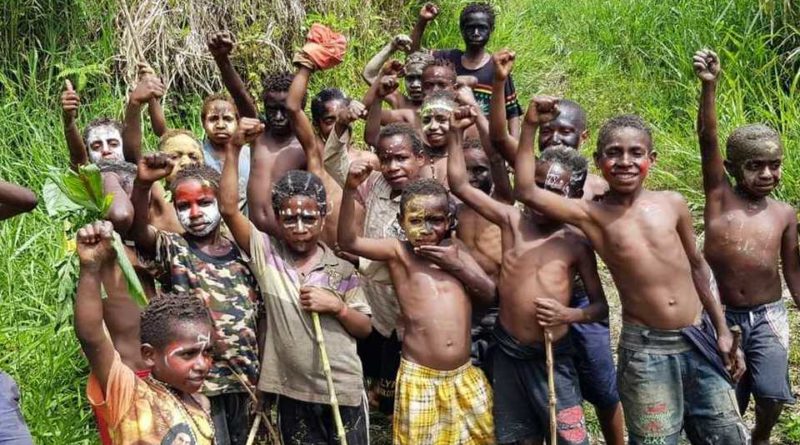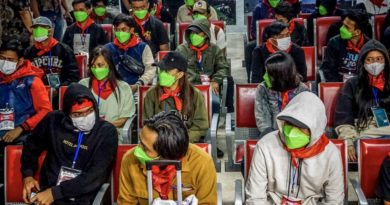PEOPLE: JAKARTA- Giving Hope to the Children of Papua
Jakarta. Papua looks blue from up above. Its shorelines and mountains are covered with verdant forest. The river that runs across its land resembles a thin brush of white paint drawn on a canvas of blue. Abundant minerals, notably copper and gold, lie beneath its fertile grounds.
Still, hidden by the luscious landscape are a large portion of Papua’s population living below the poverty line.
A lot of money from the central government has flowed into both Papua and West Papua. But they are still the poorest in Indonesia.
The latest survey from the Central Bureau of Statistics (BPS) showed that 915,000 people in Papua, or 27 percent of its population, are living below the poverty line.
.
.
ADS by Cloud 9:
.
– SPACE RESERVE FOR YOUR ADVERTISEMENT –
.
.
In West Papua, 213,000 people live below the poverty line—23 percent of its population.
In comparison, the national average is 9.6 percent.
The provinces with the richest natural resources have the poorest people. How ironic.
The poorest of the lot live in remote areas. Many Papuans in these two provinces have no access to any sort of public service. They live day-to-day without any support from the government.
Large swaths of land, nomadic lifestyles and lack of land transport infrastructure make it difficult for government officials to reach them. They endure abject conditions without any prospect for a better future.
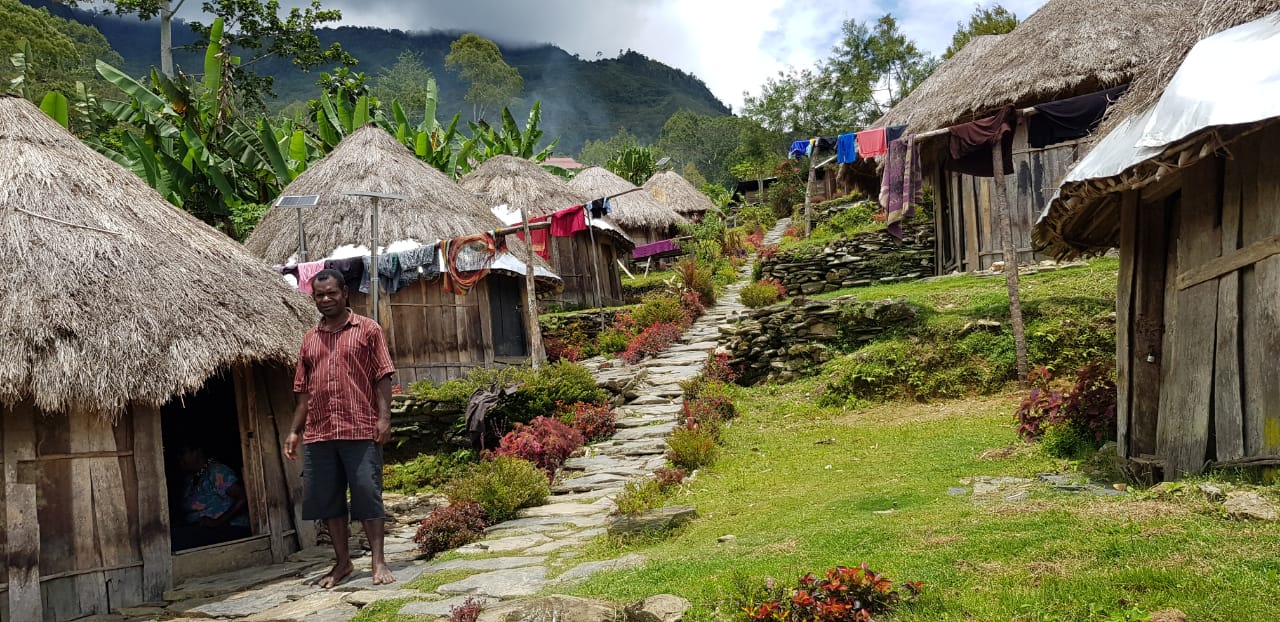
A traditional village in Mamit, Papua, with self-built houses powered by solar panels. (B1 Photo/Primus Dorimulu)
.
.
ADS by Cloud 9:
.
– SPACE RESERVE FOR YOUR ADVERTISEMENT –
.
.
“They have no money, no clothes, no education, no government and no hope,” said Stephen Crockett last Wednesday.
Stephen is an American missionary who took up residence in a village called Daboto in Intan Jaya District, Papua. Stephen and his colleagues discovered Daboto in 2000. The Indonesian government learned of Daboto only after their discovery.
As soon as he heard that there was a roof visible from the air in the deep jungles of Papua, he and his partners began searching for it. They landed their helicopter on a farm. “We are scared of arrows. But they did not hurt us, they accepted us,” Stephen said.
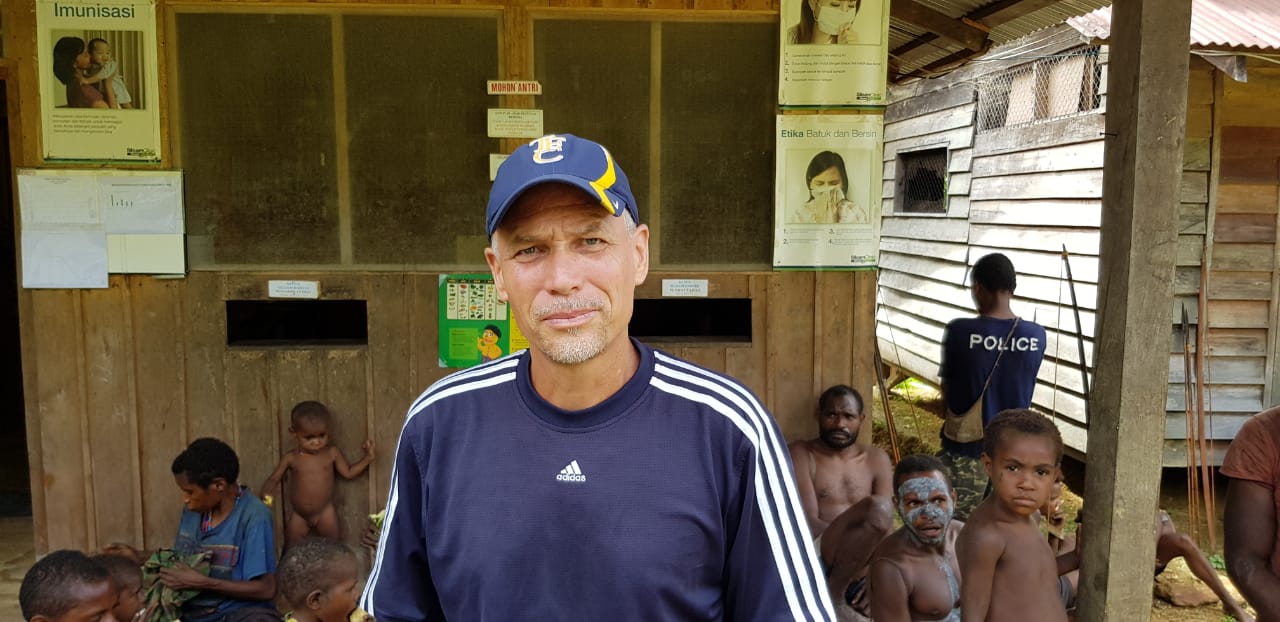
Stephen Crockett, an American missionary in Daboto, Papua. (B1 Photo/Primus Dorimulu)
.
.
ADS by Cloud 9:
.
– SPACE RESERVE FOR YOUR ADVERTISEMENT –
.
.
Daboto is located in a valley surrounded by high and pointy mountains, shut off from the outside world. It takes three nights for local residents to travel to the closest town Nabire.
The region is completely sterile of any official service, untouched by the government. Although Daboto has been included as part of Intan Jaya District, no service has ever been provided there by the government.
Steve and his wife Carolyn live in Daboto with the Moi tribe. There are around 500 members of the tribe scattered throughout the mountains. Some adult men still wear koteka, a traditional penis sheath. In 2000, there were only 100 Moi people when Steve first made contact with them.
Since the Lantern of Hope School (SLH) was established several years ago, parents chose to stay in Daboto so they could look after their children. Every Friday afternoon, they returned to the mountains to work. On Sunday, they go back to Daboto to go to church and stay there until the following Friday to take care of their children.
That the parents are willing to stay close to their children shows that they are aware of the importance of education. They live in traditional self-built homes called honai.
“We want our children to live better than us,” Lukas, a Moi, said.
Even though his child is still very young, Lukas, who is always carrying a bow and a set of arrows, is determined to send his child to school. “I want my child to be like Bapak and Ibu [you],” Lukas told the visitors with his limited Indonesian.
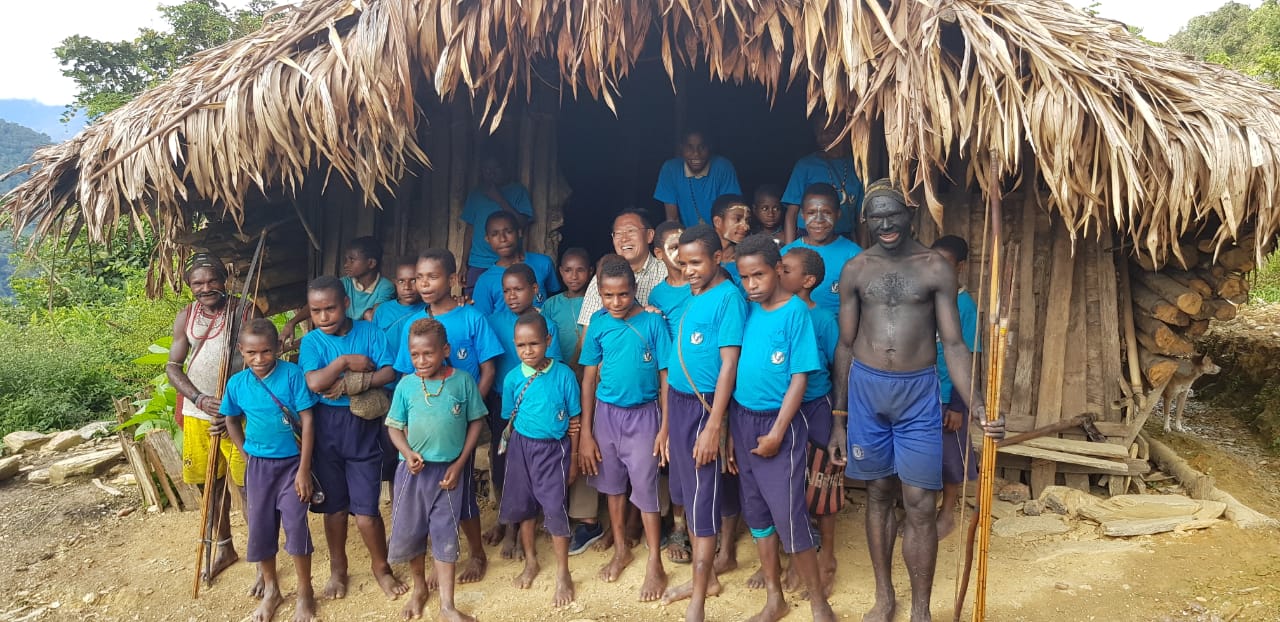
Lukas (right), carrying his “wallet,” stands with students from the Lantern of Hope School in Daboto, Papua. (B1 Photo/Primus Dorimulu)
.
.
ADS by Cloud 9:
.
– SPACE RESERVE FOR YOUR ADVERTISEMENT –
.
.
Bows and Arrows
To the people of Daboto, bows and arrows are their “wallets,” Steve said. They have nothing. Don’t imagine them having savings in the bank. They know nothing of it.
In their homes, there were no items other than several days’ worth of food and noken, handmade bags traditionally used to carry babies and food. There is no furniture. Clothes are scarce.
Things that bear any resemblance to valuables include handmade necklaces made of animal bones, rocks, tree seeds, and the teeth of a tree mouse.
Few heads of families still keep old metal coins, used to be a popular medium of exchange in Papua.
Despite owning daggers made from pig bones and stone axes, native Papuan men only carry bow and arrows with them all the time.
They used the weapon for self-defense and in combat. When there is no meat, Papuan men hunt for birds and other animals. Hence Steve calls it their wallet.

A traditional way of cooking with hot stones in Nalca, Yahukimo District, Papua. (B1 Photo/Primus Dorimulu)
.
.
ADS by Cloud 9:
.
– SPACE RESERVE FOR YOUR ADVERTISEMENT –
.
.
People who live in villages like Daboto, Mamit, Nalca and Korupun eat sweet potatoes and vegetables. Their source of protein only comes from animals and birds. It is therefore essential for men to be skilled at archery.
Food is generally grilled. One way to cook when serving large numbers of people is to “grill” stones. The stones are heated over the fire and moved onto a bed of leaves. Sweet potatoes, vegetables, and meat are then placed on the hot stones and covered with more leaves.
After 15 minutes, the food is ready to be consumed immediately. There are no salt or chili peppers anywhere in sight.
.
.
ADS by Cloud 9:
.
– SPACE RESERVE FOR YOUR ADVERTISEMENT –
.
.
Finger-Cutting
The only livestock in rural Papua are pigs. In the old days, pigs used to share space with humans in the honai and become part of the house’s inhabitants.
Pigs are valued highly here. Other than being a source of protein, pigs are a symbol of social status and are used as belis (dowry). Men who own many pigs can have more than one woman.
This is why domesticated pigs are often the most valuable property of rural Papuans.
.
.
ADS by Cloud 9:
.
– SPACE RESERVE FOR YOUR ADVERTISEMENT –
.
.
Last year, a mother from Mamit cut her finger as an expression of guilt because 15 of her pigs died of sickness.
Before they were introduced to Christianity, Papuans still believed in animism. Every living thing and inanimate object is considered to have supernatural powers which can bring them either luck or misfortune.
By cutting off her index finger, the mother wants to show her remorse and repent for her sins. She was sure that her pigs died because she didn’t care enough for them.
“Don’t cut your hand anymore, Bu. Humans are far more valuable than all other creatures on earth, including pigs,” said Aileen Hambali Riady, a member of the managing board at the Papuan Hope Education Foundation (YPHP) in Nalca on Tuesday (05/03).
Aileen said that man is God’s greatest creation, created according to His image. Therefore, they are the ones that must be glorified because man is an image of God, not other beings.
.
.
ADS by Cloud 9:
.
– SPACE RESERVE FOR YOUR ADVERTISEMENT –
.
.
According to Aileen, God is our only savior. We are obliged to worship only God for that reason. We must constantly try to get to know and be close to God and carry out His commands.
The parents listened attentively while sitting cross-legged. The founder and chairman of the YPHP James Riady reminded them of the three pillars of educating children.
First, the family is the first and most important in a child’s education. Children learn to love and forgive others from their parents.
Second, a good school. The purpose of SLH is to provide Papuan children with a good education. Third, religion. As Christians, children are brought to church. There, they listen to the word of God and gather with others to strengthen one another and enrich their faith.
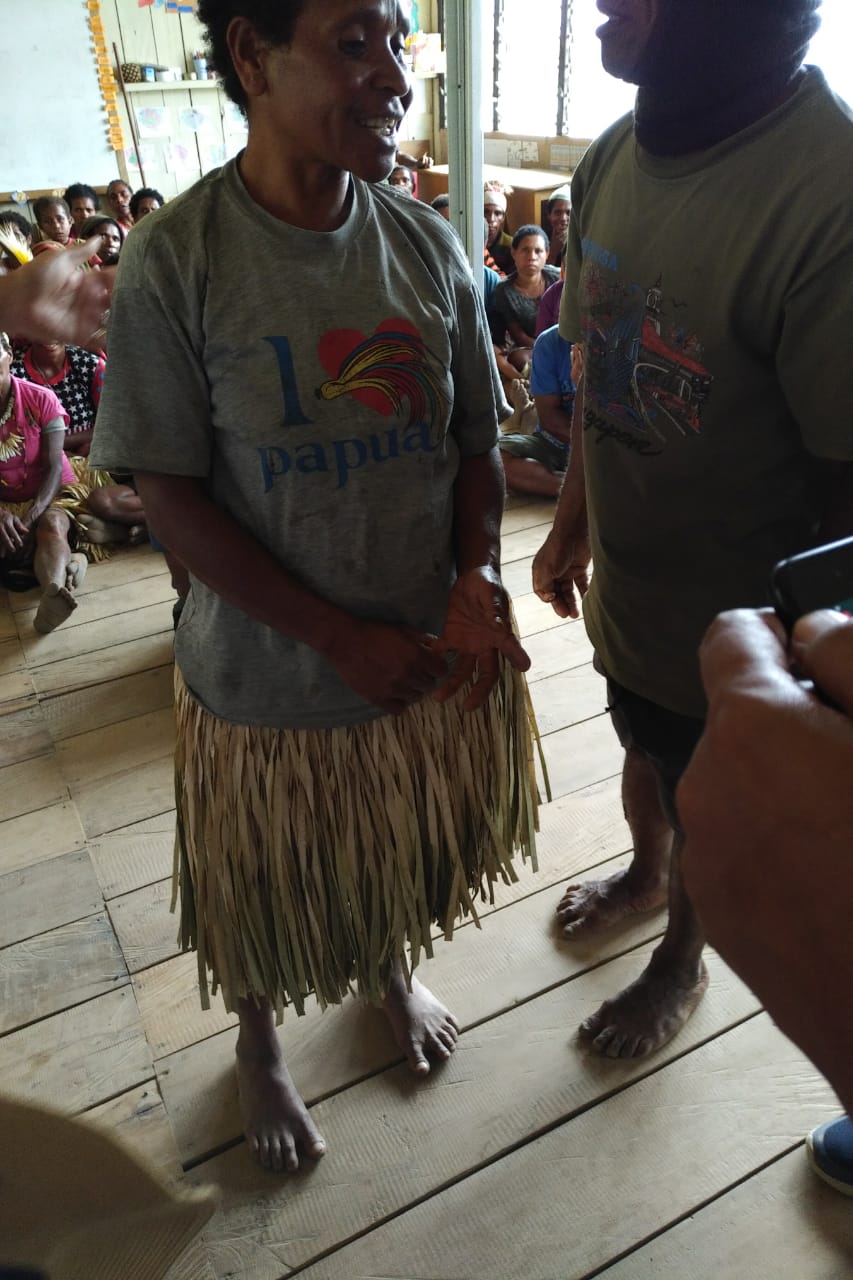
A mother from Mamit tells a story of cutting off her own finger to show remorse for the death of her pigs. (B1 Photo/Primus Dorimulu)
.
.
ADS by Cloud 9:
.
– SPACE RESERVE FOR YOUR ADVERTISEMENT –
.
.
Giving Hope
In addition to operating a school in Doboto, YPHP also operates in Sentani, the capital of Jayapura District, Korupun and Nalca in Yahukimo District, Mamit and Karubaga in Tolikara and Danowage in Boven Digul.
SLH began operations in Doboto in August 2016 and currently has 48 students. SLH has five teachers who graduated from the Teacher College, Pelita Harapan University (UPH). They handle three elementary classes, from Grade 1 to Grade 3. The YPHP built the school building on land that was given to them by the local tribe.
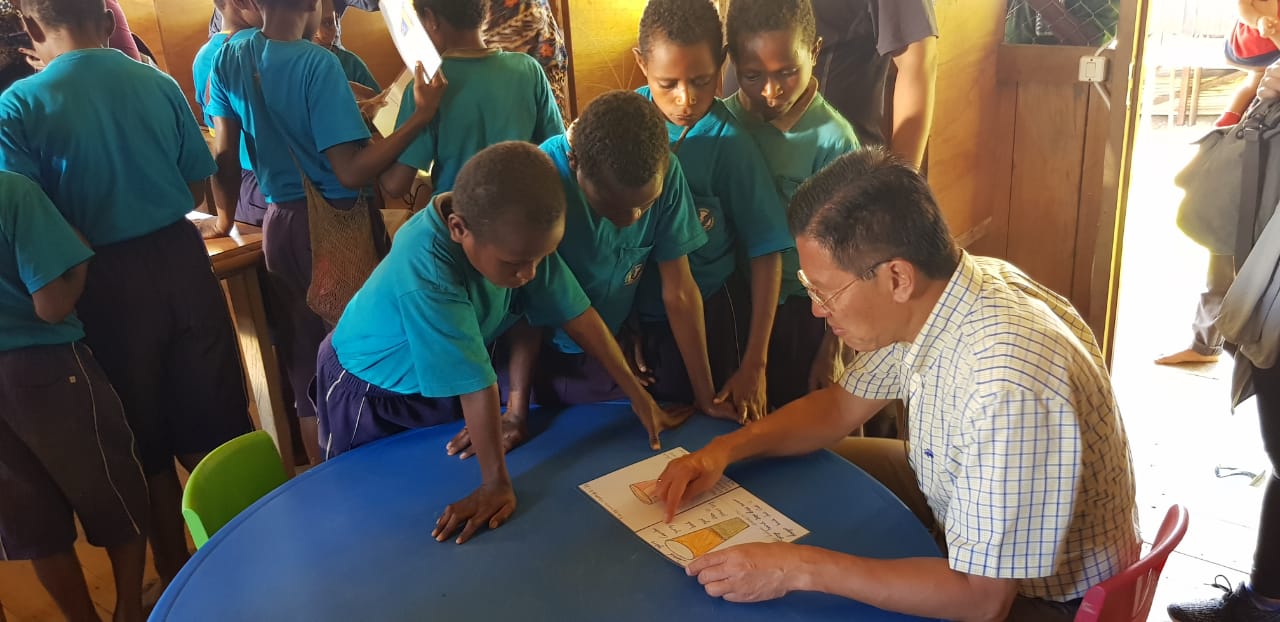
Founder and chairman of the Papuan Hope Education Foundation (YPHP) James Riady with students from the Lantern of Hope School in Daboto. (B1 Photo/Primus Dorimulu)
.
.
ADS by Cloud 9:
.
– SPACE RESERVE FOR YOUR ADVERTISEMENT –
.
.
Along with the school, YPHP also built the Siloam Clinic in Daboto. There are dozens of patients who come to the clinic every day. They are attended to by a doctor and two nurses who are all UPH alumni.
Papuan children are not usually taught to respect their parents. They carry this habit with them until they begin their education. The main challenge for teachers is, therefore, to discipline the children. The second challenge is to change the parents’ views so that they treat female children equally.
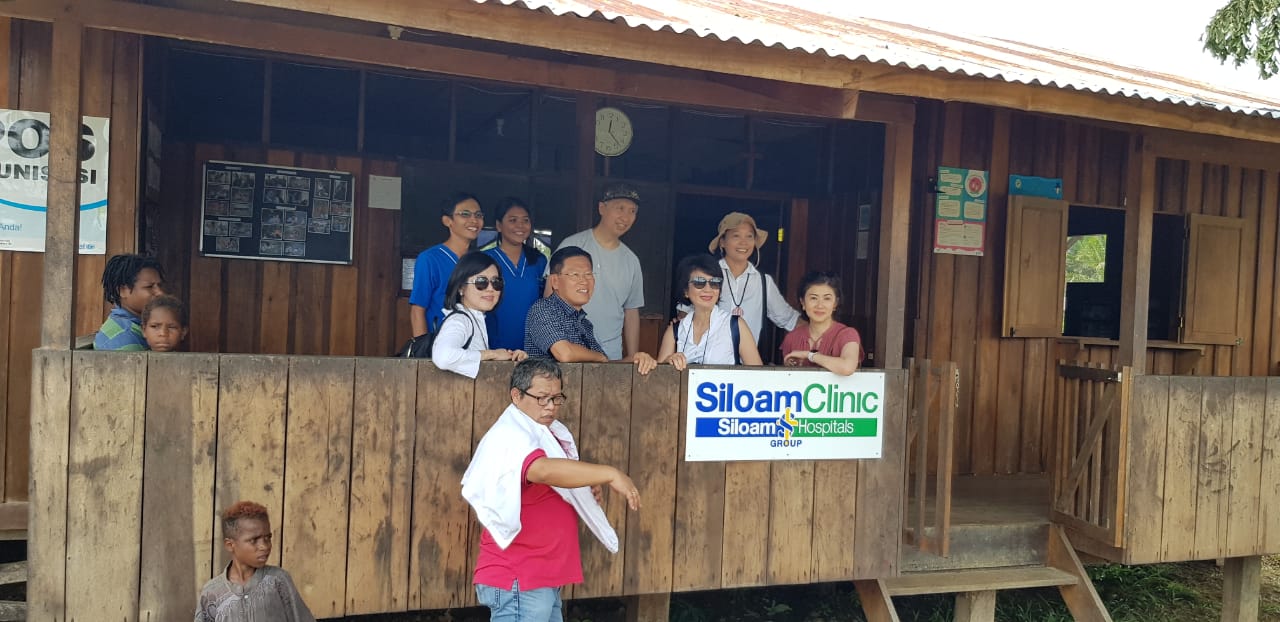
The Siloam Clinic in Danowage, Papua. (B1 Photo/Primus Dorimulu)
.
.
ADS by Cloud 9:
.
– SPACE RESERVE FOR YOUR ADVERTISEMENT –
.
.
Mamit has a special place in Aileen Hambali and James Riady’s hearts because this is where the first SLH and Siloam Clinic were built in August 2013.
This year, the SLH in Mamit has six elementary classes, from Grade 1 to Grade 6. There are around 243 students and 19 teachers who are Teacher College alumni. Siloam Clinic is handled by two nurses, both alumni of the UPH nursing school.
Three years later, in August 2016, SLH was opened in Daboto and Karubaga. At the moment, there are only Grade 1 to Grade 3 elementary classes in Karubaga. There are 66 students and six teachers.
There is no Siloam Clinic in Karubaga because it is difficult to get land in the area. Local priests, who are native Papuans, had promised James that they will give a plot of land to build the hospital.
.
.
ADS by Cloud 9:
.
– SPACE RESERVE FOR YOUR ADVERTISEMENT –
.
.
The following year, YPHP had the opportunity to open SLH in Korupun, Danowage and Nalca. In Korupun, the classes range from Grade 1 to Grade 3. There are currently 80 students and six teachers who are Teacher College graduates. There are two nurses at the Siloam Clinic.
In Danowage, SLH has 33 Grade 1 to 2 students. Although the land in Danowage belongs to the Korowai tribe, most of the students come from the Lani tribe.
Local missionaries have built a dormitory to accommodate the children from the Korowai and Lani tribes who live in the mountains and far away plains.
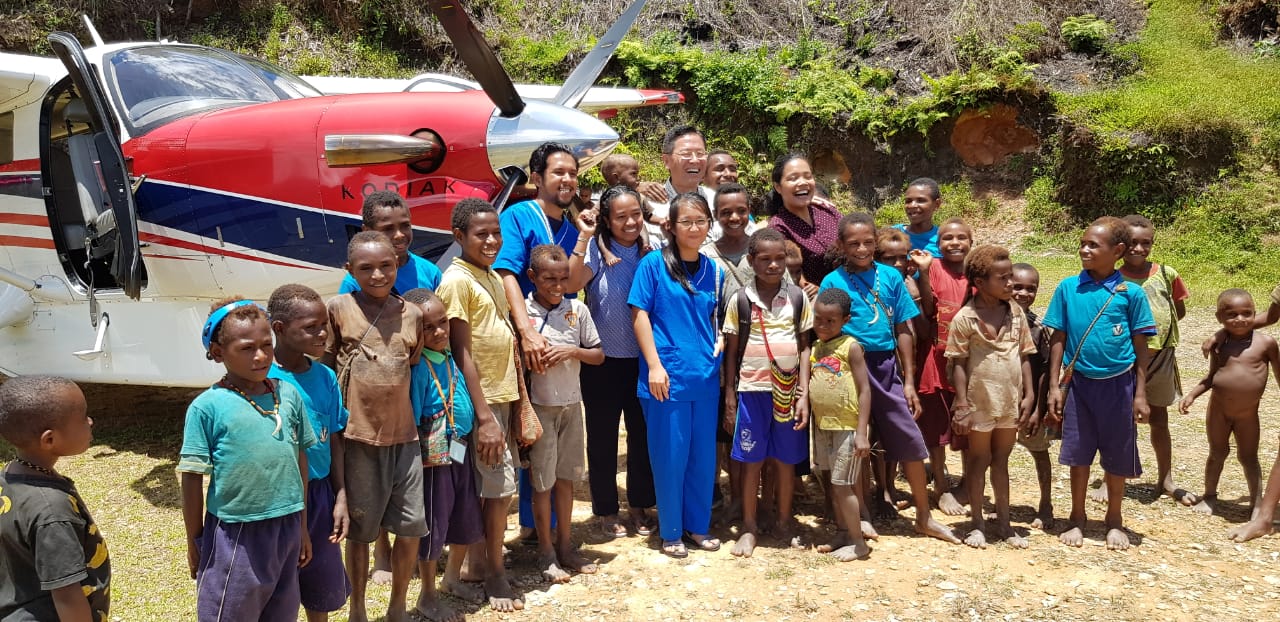
Staff from the Lantern of Hope School and Siloam Clinic in Daboto with James Riady (middle) and local students. (B1 Photo/Primus Dorimulu)
.
.
ADS by Cloud 9:
.
– SPACE RESERVE FOR YOUR ADVERTISEMENT –
.
.
There is a Siloam Clinic with a female doctor from Yogyakarta and two nurses. The Danowage area is very flat but deserted. With a paved airstrip, locals are expected to continue living in Danowage.
At Nalca, 96 children from the Mek tribe are now being taught by six SLH teachers. Local residents are enthusiastic to send their kids to school.
Nalca residents have access to healthcare through the Siloam Clinic, which has two nurses.
The economic conditions in rural Papua today show little sign of hope.
However, every child in Papua has hope for a better future and to be the equal of their fellow countrymen in other parts of Indonesia.
“I hope that Papuan children can become successful people later and that they can advance like everyone else in Indonesia,” Sylvia Makabore, a Serui-born SLH teacher at Danowage, said.
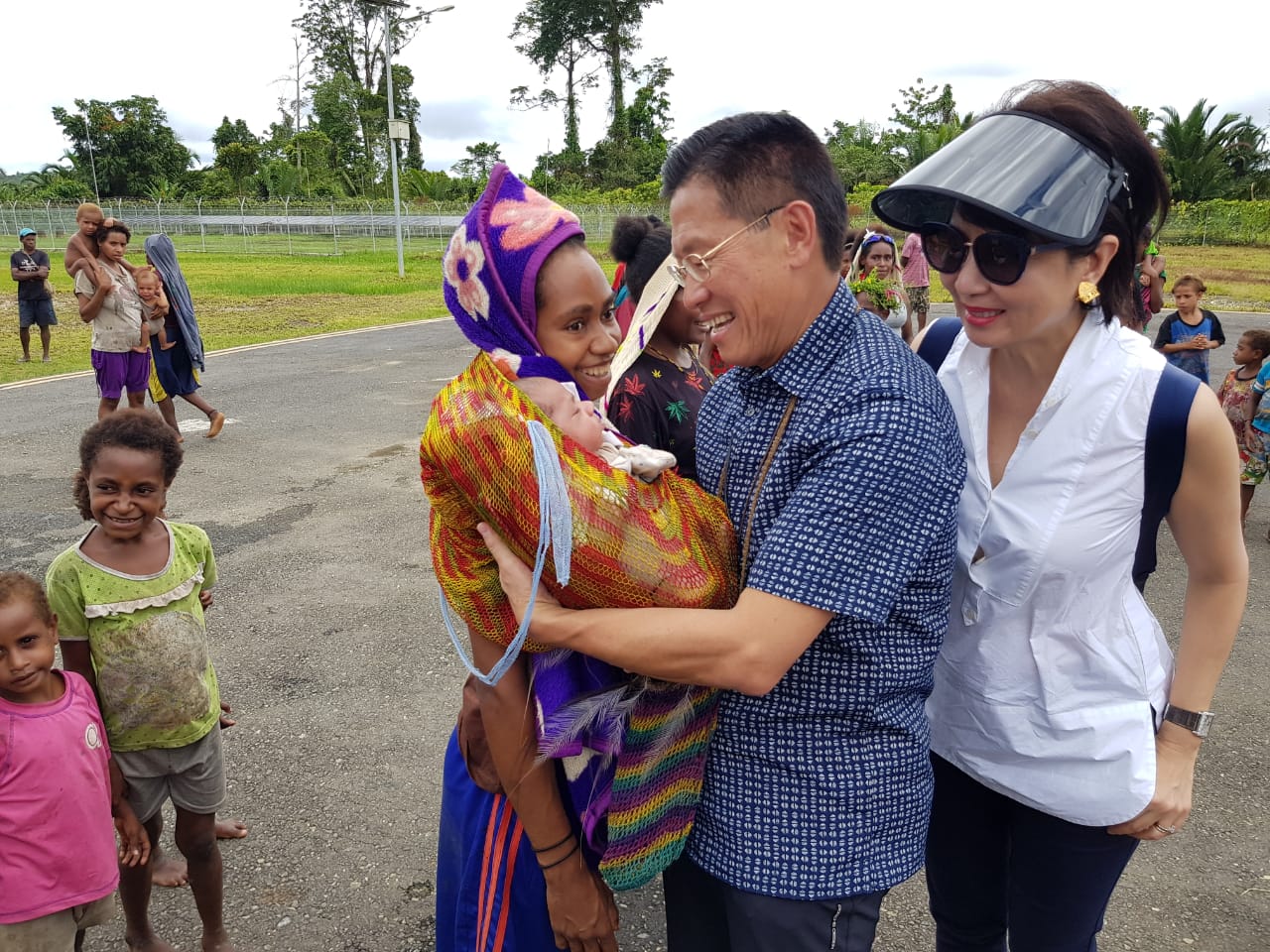
James Riady carrying a baby with a noken, a traditional handwoven bag, in Boven Digul District, Papua. (B1 Photo/Primus Dorimulu)
.
.
ADS by Cloud 9:
.
– SPACE RESERVE FOR YOUR ADVERTISEMENT –
.
.
The teachers at SLH do not only introduce Papuan children to God, but also make them feel embraced as Indonesians.
“I am very happy when Papuan children draw the Garuda bird with the symbols of Pancasila,” a teacher at Daboto said.
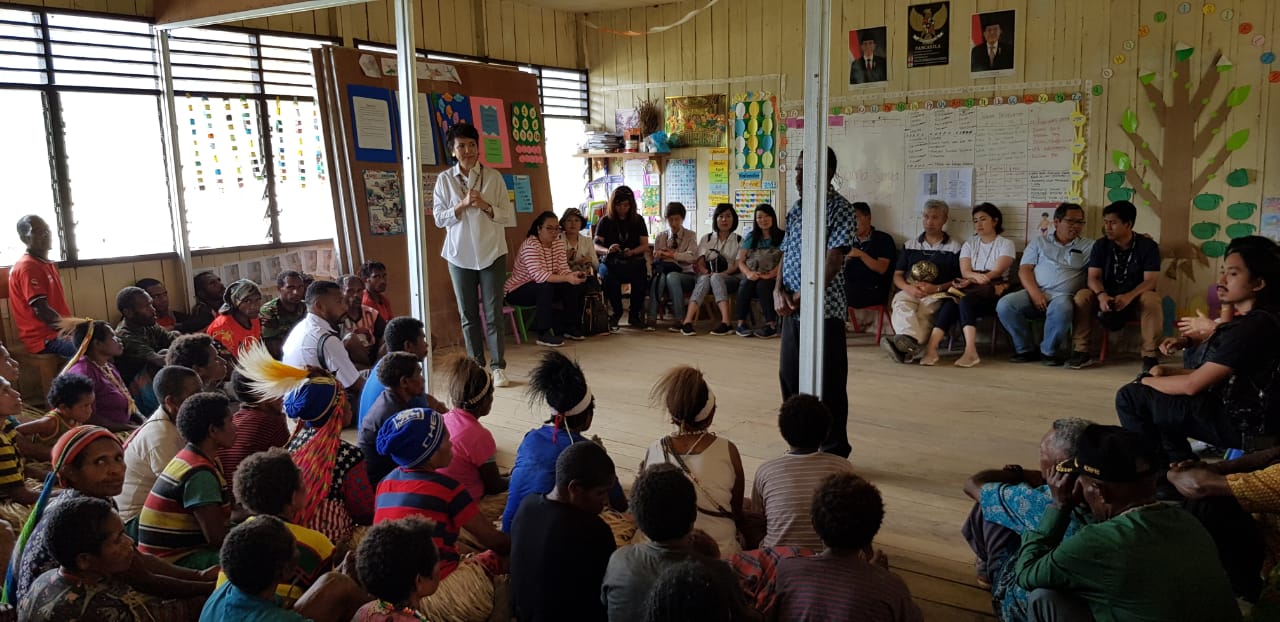
Parents listening to Aileen Hambali Riady, a member of the Papuan Hope Education Foundation (YPHP) managing board, at the Lantern of Hope School in Nalca, Papua. (B1 Photo/Primus Dorimulu)
.
.
ADS by Cloud 9:
.
– SPACE RESERVE FOR YOUR ADVERTISEMENT –
.
.
Papua has a land area of 310,000 square kilometers with 3.6 million residents. Its population density is 11.8 people per kilometers, compared to the national population density of 125 people per square kilometer.
Indigenous Papuans make up around 52 percent of the population. There are many Papuan tribes, but the largest are Amungme, Arfak, Asmat, Dani (Lani), Damai and Yali.
About 82 percent of the Papuan population are Christians, either Protestant or Catholic.
The late Franky Sahilatua, a singer from Maluku, composed a song called “I am Papua.” The song was made popular by Papuan singer Edo Kondologit and is now a mandatory song to learn for Papuan children. They sing this song passionately.
.
.
ADS by Cloud 9:
.
– SPACE RESERVE FOR YOUR ADVERTISEMENT –
.
.
In some areas of Papua, the song’s lyrics are slightly changed. Here is a verse from a version of “I Am Papua” sung by the children:
My skin is dark, my hair is curly
I am a child of Papua
Dancing on my land and country
Holding the Lord’s flag
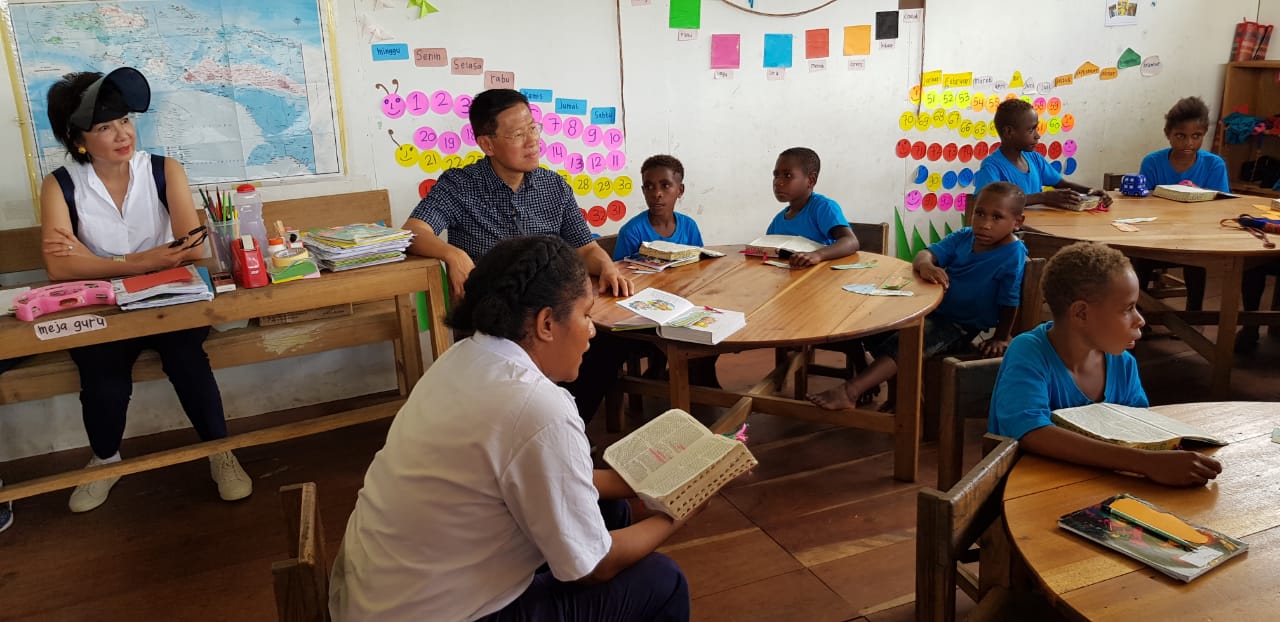
Sylvia Makabore (middle), a teacher at the Lantern of Hope School in Danowage. (B1 Photo/Primus Dorimulu)
.
.
ADS by Cloud 9:
.
– SPACE RESERVE FOR YOUR ADVERTISEMENT –
.
.
It is all Indonesians’ duty to make the land of Papua and Indonesia, from Sabang to Marauke, a land of hope for Papuan children. We must give them hope for the future. They must not only be able to enjoy Papua, but Indonesia as a whole. The arrival of missionaries in rural Papua, a remote area that is unreachable by the government, should motivate more of us to take concrete steps to give hope to the children of Papua.
.
ADS by Cloud 9:
.
– SPACE RESERVE FOR YOUR ADVERTISEMENT –
.
.
HUMAN LIFE:
All photographs, news, editorials, opinions, information, data, others have been taken from the Internet..aseanews.net | [email protected] / For comments, Email to : Aseanews.net

